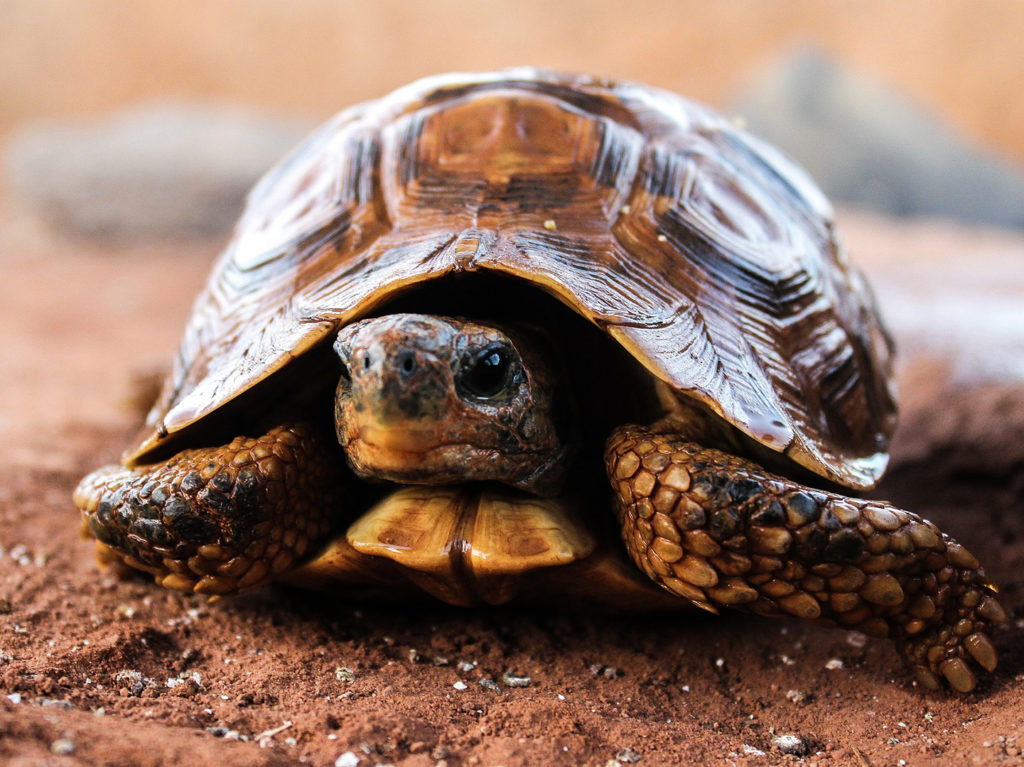Turtle Brumation: The Benefits & Dangers Of The Hibernation Cycle

Some animals, like bears, are known for their infamous hibernation periods, but many people may not be aware that some reptiles, including many turtles and tortoises, experience a hibernation cycle as well.
This period of dormancy, which occurs in reptiles during the colder months, in known as brumation.
Dr. Ashley Navarrette, a clinical assistant professor at the Texas A&M College of Veterinary Medicine & Biomedical Sciences, offers insight on best practices for caring for a turtle or tortoise going through brumation.
Brumation is fueled by colder nighttime temperatures paired with decreasing daylight hours. This process usually occurs around October/November and lasts until early spring but slightly variates based on one’s distance from the equator.
While pets kept indoors may not experience brumation because of the lack of environmental change, Navarrette explained that brumation is a necessary process for reproductive and overall health.
“Brumation plays a huge role in the regulation of hormones, both reproductive and other, within the body,” she said. “It is found that if bromating turtle species are prevented from bromating, they tend to be more prone to illnesses and a shortened life span.”
Although brumation is a natural process in wild species, reptile owners can support the process with their pets; however, because this process can be quite dangerous for turtles/tortoises, it should only be initiated by an experienced caretaker or veterinarian.
“It is important that an owner educate themselves on the species of turtle/tortoise they have and if they are a species that undergoes brumation,” Navarrette said.
In preparation for brumation, turtles/tortoises should spend the summer months gaining weight and preparing nutritionally, especially with foods rich in Vitamin A.
Turtles/tortoises also should have pre- and post-brumation physical examinations with a veterinarian who is well versed in reptile medicine.
“In preparation for brumation, animals will stop eating, bury themselves, and may or may not intermittently wake to drink,” Navarrette said. “It is generally accepted that turtles/tortoises will lose 6-7% of their body weight during brumation, at a rate of 1% per month; however, if greater body weight losses are appreciated, this can be indicative of disease.”
While turtles and tortoises may be less active during brumation, these 10 to 14 weeks are not a time for owners to simply forget about their pet. Brumation involves routine soaking to prevent dehydration, weigh-ins, and closely monitored environments, whether outdoors or indoors.
If a turtle/tortoise undergoes brumation outdoors, it is at the mercy of the environment, which can include temperature extremes and predators such as dogs, foxes, racoons, and rodents.
Severely cold temperatures also have the potential to result in the freezing of the turtle/tortoise if they are not adequately insulated or buried deep enough. Owners can help prevent this by providing an alternate, indoor environment during periods of extreme weather.
“For example, during the hard freeze last February, all of my outdoor brumation turtles were brought into a garage and additionally insulated so the enclosure temperature remained around 30 F,” Navarrette said.
A sick or injured turtle/tortoise, as well as any under the age of 4, should never undergo brumation. These animals can be housed indoors with appropriate light hours (usually greater than 12 hours) and temperature in order to help prevent bromating.
“Brumation can be dangerous but is often necessary for the reproductive and overall health of both wild and captive turtles/tortoises,” Navarrette said. “Please consult with your exotic veterinarian prior to this process. Many exotic veterinarians will actually provide brumation services to their clients for a small fee.”
With any pet, an owner has a responsibility to educate themselves on nutrition and special care requirements, such as brumation. With the support of a trusted veterinarian and a bit of research on best practices, pet owners can help their reptile friends safely rest during the winter.
Pet Talk is a service of the College of Veterinary Medicine & Biomedical Sciences, Texas A&M University. Stories can be viewed on the web at vetmed.tamu.edu/news/pet-talk. Suggestions for future topics may be directed to editor@cvm.tamu.edu.


